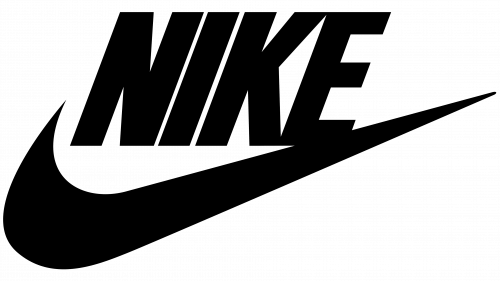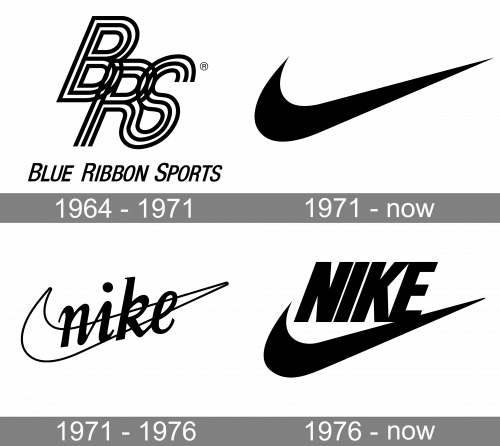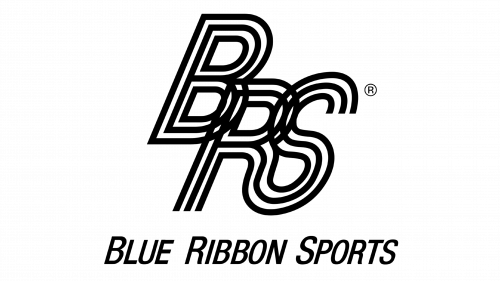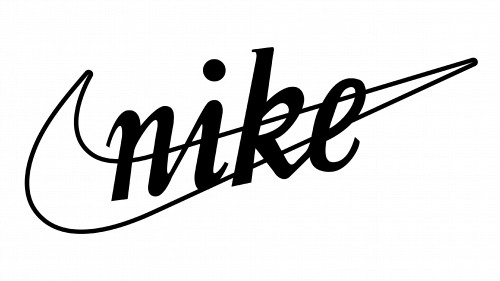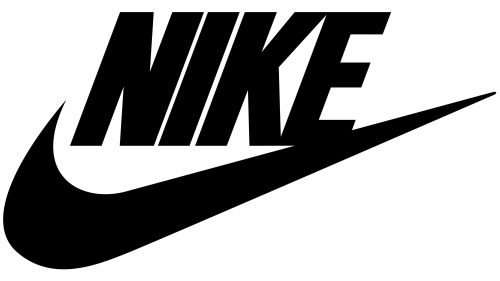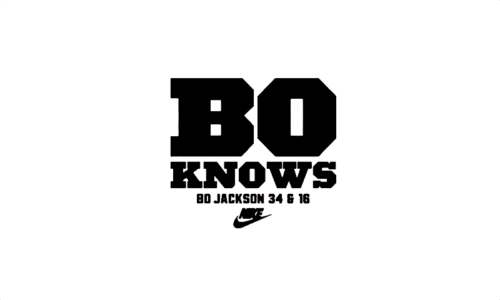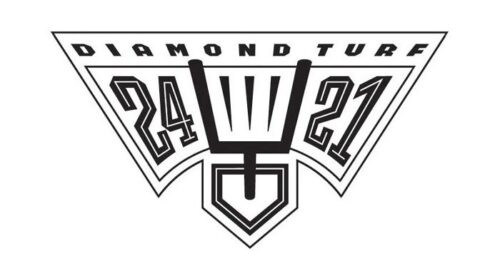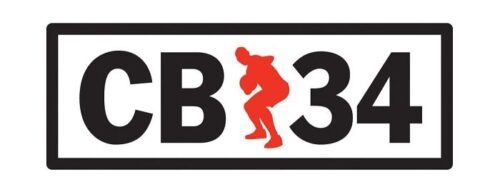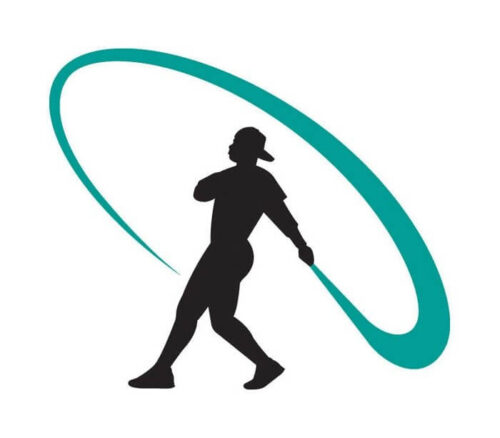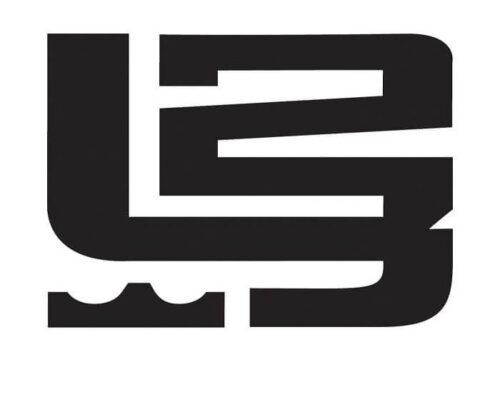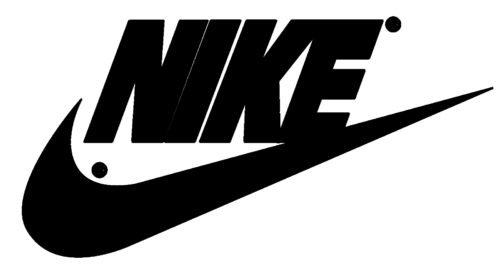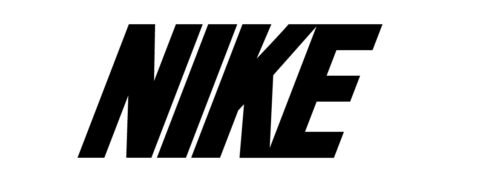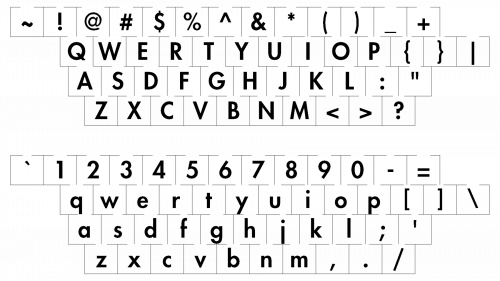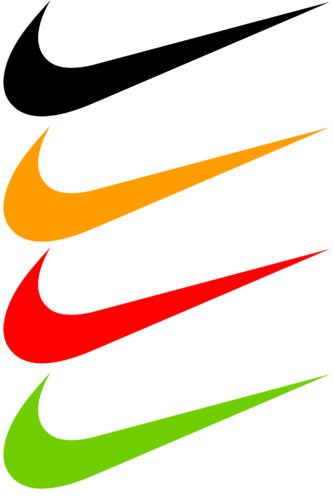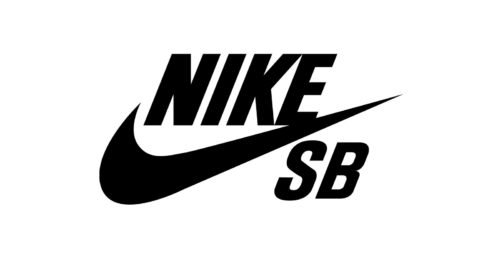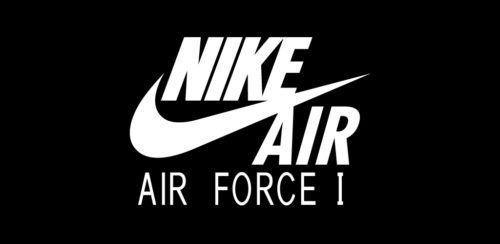The minimalistic tick that represents the Nike brand needs no additional introduction, because it is recognizable by everyone, which means that the legendary The Swoosh is one of the most popular logos in the modern history of visual design. And the story of the creation of this emblem is as interesting and simple as the story of the founding of the brand itself. Nike began with the introduction of Phil Knight and Bill Bowerman. Phil was a middle-distance runner and Bill was a track and field coach at the University of Oregon. Their acquaintance was the beginning of the story called Nike. Now let’s go through it all in order.
What is the symbol of Nike?
The symbol of Nike is an iconic Nike Swoosh, one of the most popular and successful emblems, created in the 20th century. The swoosh can be seen in various colors, yet in any shade, it looks sleek, achy, and powerful. This symbol stands for motion and speed, representing the wing of the goddess Nike, the Ancient Greek goddess of victory, who gave the name to the brand.
Meaning and history
The creators of the Nike brand met in 1957 at the University of Oregon. Phil Knight enrolled at the University of Oregon to be on the team of a legendary coach, Bill Bowerman, who had produced many Olympic champions from the university’s student body, focusing on their all-around development, not just physical training. Sharing the same values and vision of life, guys made friends quite fast.
In addition to unique training, Bill Bowerman introduced a huge number of other innovations. He was looking for the most comfortable shoes for athletes and even modernized them himself. And Phil Knight, for his part, had a serious interest in entrepreneurship. After studying the market, he came across a Japanese manufacturer of Onitsuka Tiger sneakers, which were of the highest quality and not too expensive. In 1962, Phil traveled to Japan, where he bought a test batch of these sneakers. In order to sign a contract with Japanese partners, Phil had to come up with a name for his company on the fly. That’s how Blue Ribbon Sports, the foundation of the future Nike giant, was born.
The first batch of Japanese sneakers was sold through familiar athletes and coaches, who helped the new company in many ways, leaving the most detailed feedback. In 1965, Knight and Bowerman were joined by Jeff Johnson, who also had a passion for athletics. Johnson was the one who came up with the name for the company. One day, he simply dreamed of the Greek goddess of victory, Nike.
In 1971, Phil Knight is still working at the university to maximize the income that Blue Ribbon Sports brings in. There he meets student Carolyn Davidson, the girl who creates Nike’s famous Swoosh emblem.
What is the Nike symbol called?
The Nike symbol is known under the nickname “The Swoosh”. This tick with an arched contour and sharp ends of the line has become iconic by today, representing motion and speed. The idea of the Swoosh is connected to the name of the brand, Nike, called after the Greek goddess of Victory, and the graphical element represents the goddess’ wing.
Just Do It
The Swoosh is not Nike’s only advertising achievement. The brand’s legendary slogan, “Just Do It”, was ranked the second-best slogan of the 20th century by the American magazine AdAge. And British design agency Sparkloop surveyed a thousand people aged 18 to 65 and found that Just Do It is the most memorable slogan. So when and how was Nike’s second most important advertising element created?
In the early 1980s, Nike had a very serious competitor, Reebok. The company emphasized fitness and aerobics, which were rapidly gaining popularity, while Nike remained loyal to athletics. Knight and partners couldn’t help but notice the changing mood in the sporting goods market and decided to target a wider range of people, regardless of age, gender, or fitness level. Nike decided that a powerful promotional campaign would help to become a brand for everyone. Wieden & Kennedy, Nike’s in-house advertising agency, developed the campaign.
It was the agency’s co-founder Dan Wieden who suggested the brand’s “Just Do It” slogan, inspired by the last words of convicted criminal Gary Gilmore (In 1977, Gary was sentenced to death for robbing and killing two men. His last words were “Let’s do it”). A bit later designer Ron Dumas introduced a graphic representation of the iconic slogan, which was printed in black lines of the Futura Bold Condensed font. Until today, this logotype is the second most famous Nike insignia, strongly associated with the brand, speed, and motion, and not with Gilmore anymore.
With the launch of the Just Do It campaign Nike launched an aggressive marketing strategy: in 1988 the company spent 40 million dollars on advertising. The hero of the first Just Do It promo in 1988 was 80-year-old marathon runner Walt Stack.
Just Do It perfectly reflects the philosophy and values of one of the premier sports brands in history — its strength and straightforwardness, love of competition, and determination.
The Primary Logo
Nike is definitely one of the strongest and most famous brands in history, which has its vision, targets, and approach. The Nike brand is not just a fashion symbol, it is a cultural phenomenon, a success story, and an inspiration to millions of people around the world. Even the logo of the company has a very interesting story, which perfectly shows, that the simplest things can have the strongest impact. It was Nike’s first line of shoes with the iconic Swoosh logo, released in the early 1970s, that changed the world of the sports industry forever. But the story of the Nike visual identity started a bit earlier, in 1964, with the foundation of Blue Ribbon Sports.
1964 – 1971
Before the Swoosh badge and the Nike brand itself, the company was called Blue Ribbon Sports and only resold Japanese Tiger sneakers. The company’s logo first appeared in 1964 and featured a combination of a modest sans-serif inscription and a stylized abbreviation. The text was placed under the interlacing letters “BRS”, contoured and merged, with all three characters inclined to the right, just like the name of the company, written at the bottom of the composition.
The first “B” was separated from two other letters, overlapping the upper part of the “R” on the left. At the same time, the “R” was smoothly merging into “S”, which also overlapped it, but on the right. Although the composition only contained three letters and was executed in the black and white palette, it looked quite complicated, this is why the underline was made pretty simple: an italicized uppercase inscription in a simple sans-serif.
1971 – now
In 1971, the official emblem of a new brand called Nike became the Carolyn Davidson-designed Swoosh. Over time, the swoosh was supplemented with different graphic elements and fonts, but the basis of the logo remained the same for nearly 50 years. Since those early days, he has helped Nike become one of the most recognizable and profitable global brands.
The logo with a solid black Swoosh on a transparent background with no additional elements is still used by the company today, making up the depiction of power and reflecting the strength of simplicity.
1971 – 1976
Another Swoosh from 1971 was contoured in black and overlapped by a bold lowercase cursive wordmark, set a bit diagonally against a white background, which only enhanced the sense of motion and speed, conveyed in the original idea of the logo. This was the logo, used for the shortest period in the history of the brand, yet it still had its charm and reflects the old-school style of some of the Nike current sneakers models.
1976 – now
While in the 1971 version, the Nike inscription was directly on the swoosh, in 1976 it was shifted and placed above it. What’s more, the style of the lettering was dramatically changed — the lowercase cursive turned into a bold geometric sans-serif wordmark in the uppercase. As for the swoosh, in the 1976 version, it was solid black, just like on the initial emblem, created by Carolyn Davidson in 1971.
The massive letters and their straight lines and cuts added a sense of stability to the smooth and sharp swoosh, they grounded the emblem, creating an image of a confident and powerful brand, with a very progressive look.
Who made the Nike logo?
The Nike Swoosh was created in 1971 by Carolyn Davidson, who was studying design at Portland State University. She received $35 for the job, which today equals $217. Nike co-founder Phil Knight, who was an accounting teacher at the University, offered her to design the logo when he heard her complain she didn’t have the money to buy oil painting supplies.
Collaborations
During its long history, Nike worked not only on its collections but also collaborated with a lot of stars of professional sports. Today the famous brand has more than a dozen collaborations, each with a different visual identity. Nike skillfully uses the image of sports stars to promote its products. Basketball player Michael Jordan, tennis player Maria Sharapova, and soccer player Ronaldo — are all the faces of the brand. Collaboration with sports stars helps to build Nike’s association with victories and achievements.
1985, Jordan Wings
The history of the Jordan brand began with an iconic model – the Air Jordan 1. In 1984, Olympic champion and famous basketball player Michael Jordan moved to the club “Chicago Bulls”. Nike began to fight to sign a contract with the athlete. After long negotiations, Michael signed a 5-year agreement for $2.5 million. In 1985, the new line launched with the Jordan Wings logo. Shortly after meeting with Jordan’s agent, Nike creative director Peter Moore drew the Wings logo on a cocktail napkin. The idea for the winged logo came from Nike’s creative director Peter Moore. The designer drew it on the back of a napkin on his way home from a meeting with Jordan’s agent.
1988, Jumpman
The famous Jumpman, which can still be seen on the Brand’s products today, appeared in 1988 in the Air Jordan 3 sneakers, while the first two models in the series featured the Jordan Wings emblem. Peter Moore liked the Nike poster of Michael Jordan soaring through the air with a basketball in his left hand, and it appears on the emblem. The 1988 logo was Moore’s attempt to create a symbol that people would immediately recognize and that could stand for his new style.
1989, Bo Jackson
In 1989, Nike developed its trademark for former professional baseball and soccer player Bo Jackson. The company released a series of “Bo knows” videos featuring the athlete, and created a logo with a capital “O” and a capital “B”. This minimalistic and super stylish logo has brought a lot of dividends and recognizability to the brand, which was only starting to conquer the world in the 1980s.
1991, Challenge Court
One of the most famous collaborations of the Nike brand with sports celebrities happened in 1991 when the company launched a tennis line for the tennis legend Andre Agassi, called Challenge Court. The branding of the campaign was created by Tim Andric. According to the designer, the logo came about entirely by accident. Tim drew with a capillary pen, popular at the time, the ink splattered on the paper, forming a blotch that resembled a tennis ball.
1993, Diamond Turf
Diamond Turf is the signature line of Deion Sanders, who played two sports – soccer and baseball. In 1993, Nike created a logo for the Diamond Turf line of soccer cleats that represented both sports. Deion wore Nike products throughout his professional soccer and baseball career. The image on the Nike logo displayed both sports that the famous athlete played. It was located on the tongue of the soccer cleats and featured Sanders’s game numbers — 21 and 24.
1994, Charles Barkley
The logo for Nike’s collaboration with one of the most powerful and heavy forwards, Charles Barkley, was designed by Donna Campa, combining the basketball player’s silhouette, drawn in red in the center of the rectangular banner, with his initials, and the “34” number, set in solid black on the sides from the silhouette.
1995, 1 Cent
Basketball player Anfernee Hardaway, better known by his nickname Penny (1 cent), signed a contract with Nike in 1995. It was the athlete’s nickname that became the basis for the incredibly popular logo that adorned the branded products of this line for many years. The palette of the logo matched the colors of the Orlando Magic team for which the athlete played.
1998, Swingman
The Nike Swingman logo was created in 1998 for the name sportswear and footwear of baseball player Ken Griffey, Jr. The logo design, featuring a black silhouette of the player and a relatively thick turquoise arched stroke indicating the trajectory of his swing, was designed by Kevin Plath and has become the most recognizable among baseball fans around the world and in particular the United States. While the pose Ken is in might be associated with any other baseball player, it’s the cap worn backward (Griffey Jr.’s trademark) that indicates him.
2003, Tiger Woods
In 2003, Nike partnered with the legend of golf sport, Tiger Woods, to launch a new golf apparel and footwear division. The bold and sharp Nike version of the Woods’ initials has become one of the most recognizable athlete’s signature logos. The logo was ubiquitous at every appearance of the athlete, this led to the logo gaining not only notoriety in the golf community but around the world.
2003, Lebron James
The first of many LeBron James logos appeared in 2003. It consisted of the athlete’s initials and game number. All the other logos, be it crowns or lions, played on the theme of the king of basketball. The thickness of the lines and an interesting ornament of the LeBron & Nike badge has made somewhat of an improper symmetry, which created a super recognizable image, perfectly reflecting the vibe of the iconic athlete.
2003, Cristiano Ronaldo
Another huge name in the Nike collaboration portfolio is Cristiano Ronaldo. The famous football player has signed his first contract with the brand in 2003, and in 216, the contract status was upgraded to lifetime, making Ronaldo the third such athlete after Michael Jordan and LeBron James. The logo of this iconic collaboration is very minimalistic and chic — the enlarged CR7 monogram is placed above or beyond the sharp and elegant Nike Swoosh.
2004, Carmelo Anthony
Carmelo Anthony is one of the best players in the NBA and one of those athletes lucky enough to be under contract with Nike. The basketball player was promoting a line of sportswear and Jordan Carmelo 1.5 basketball sneakers. As for the logo of the campaign, it was more like super cool tattoos with the stylized “M”, drawn in sharp intertwined lines, and accompanied by the “Melo”, written above it in the same styles.
2005, Serena Williams
In 2005, another significant collaboration between the Nike brand and a world sports star took place. This time the tennis player Serena Williams became the brand’s favorite. The logo of the new project was executed in the black-and-white color palette and featured a stylized SW monogram, which looked somewhat like a rethought lotus flower image, drawn in distinctive lines with sharpened ends.
2006, Kobe Bryant
According to the legendary athlete, who began his collaboration with Nike in 2006, his emblem is a sword in a scabbard, where the Sword is the naked talent and the scabbard is its sheath, the effort we put in, our life experience. This emblem has, without exaggeration, become one of the most recognizable in the history of the brand.
How much did the emblem cost?
Probably, one of the most well-known stories about the Nike logo creation is about how much its designer got for it. Believe it or not, Carolyn Davidson initially received as little as $35 for creating one of the world’s most recognizable emblems (about $215, if adjusted for inflation in 2017). However, this sum does not look that strange taking into consideration the circumstances. To begin with, at the time Davidson was nota professional designer, while Phil Knight, who commissioned her for creating the Nike logo, was just at the beginning of his way to success.
And, yet, over time the designer received much more. In 1983 she was invited to a company lunch, where Knight presented her with a diamond ring in the shape of the iconic Swoosh and an envelope with Nike’s shares. They were $150 worth back then, but now their cost has reached $643k. Carolyn Davidson says she is not a millionaire today, yet lives quite comfortably.
Icon
Who designed the Nike logo?
One of the most iconic logos of all time, the Nike Swoosh, was created in 1971 by a young graphic designer, Carolyn Davidson. She was hired by the brand’s co-founder at the end of the 1960s, who wanted the logo to represent the movement and dynamics.
The name of the Nike logo, “swoosh,” now known throughout the world, conveys the sound of high speed (wind whistling). It has become a symbol of perpetual and uninterrupted motion. The tick in combination with the later slogan “Just do it” was designed to stimulate athletes to action, new accomplishments, and achievements. Nike is one of the few companies, which logo has its own, unique name, which is not associated with anything else.
The Swoosh icon is one of the most recognizable logos among customers and athletes. It can be seen not only in sneakers but also in all the products of the brand. As for the web icon, it is usually executed in a monochrome palette, looking progressive and minimalist — with the solid black swoosh in a white background, or a white smooth placed on a plain black square with rounded angles.
Font and color
For more than 20 years since its creation, the Nike logo included the name of the company. For much of the time, it was written in Futura Bold, an all-cap typeface. The minimalistic sans-serif type looked straightforward and energetic, which went well with the company’s core values. It was only in 1995 that the wordmark was removed. By that time, it was obvious, that Nike did not have to include its name in the emblem to make it instantly identifiable – it was already known all over the globe.
As for the color palette of the Nike visual identity, here there are several options. Initially, the scheme was based on the combination of red and white, symbolizing energy and motion. However, today, the primary version of the Kinect badge is usually set in black, against a plain white background. Yet to this day, the iconic insignia can be seen in various shades, depending on the collection or the company‘s marketing needs.
Logo Variations
Although the Swoosh has remained virtually unchanged since its creation in 1971 by Caroline Davidson, it is far from the only Nike symbol. The company has an extensive library of sports logos, numbering more than a dozen. And yes, most of them are logos of Nike’s collaborations with famous athletes and other brands (we’ll talk about collaborations below), but even the “native” models of Nike sneakers sometimes modernize their logos.
Nike SB logo
Nike SB is a line of skateboarding shoes, apparel, and equipment introduced by Nike in 2002. The Skateboard logo of the Nike brand looks almost identical to the regular one, except for the letters “SB” below the swoosh. Its strength, stability, and bold geometry perfectly represent the spirit of the subculture and the quality of the brand’s products.
Nike AIR logo
The Nike Air logo debuted in 1982, three years after the technology was put into mass production. For the Nike AIR logo, the standard Nike emblem is complemented by the word “AIR” written in a thinner, clearer all-cap type. Subsequently, this emblem became very popular and was placed in the heel area of sneakers. Virtually all of Nike’s retro footwear has this mark.
Nike Air Force 1
Another famous Nike logo is the Air Force 1 emblem, which appeared in 1982 and grew into a whole family of logos. The main element here is a geometric abbreviation in a flat true color, with right angles and clear contours. The sneakers of this series are the most popular shoes for the entire existence of the brand.
Nike Force
In the mid-1980s, Nike began developing its basketball line of sneakers, which also required a separate logo. The original Nike Force logo, created in 1987, features a basketball in the foreground with bold lettering in the background. The entire composition was executed in a minimalistic black-and-white color scheme.
Nike Air Huarache
Another famous logo in the Nike collection is the Huarache emblem; designed by John Norma. The 1993 logo, still used by the company today, is based on a stylized emblem consisting of thin white lines and narrowed text around the perimeter of a black circular medallion. The black, white, and blue color palette makes up a fresh yet mysterious mood.
Nike Air Elements
In 1999, Nike released a family of Elements logos for various forms of Nike Air technology. To date, has been created several emblems in this series, but they are all based on the “style” of the periodic table of Mendeleev, where the emblem of one or another form is horizontally divided into two segments with abbreviations in each of them.
What is the Nike logo meaning?
The iconic Nike logo, composed of a smooth swoosh symbol with clean contours and sharp ends, is a depiction of the wing of the Greek goddess Nike. Apart from the mythological meaning of the swoosh, it also symbolizes motion and speed, showing the essence of the brand.
What was Nike’s original logo?
The original logo of Nike was created in 1964 when the name of the company was Blue Ribbon Sports. It was a badge, composed of a stylized BRS monogram executed in a triple-outlines sans-serif font with the lines of the “R” and the “S” elongated and merged. The icon was accompanied by a slanted uppercase inscription under it.
How did Nike get its name and logo?
Nike was named after the Greek goddess Nike, once dreamt by Phil Knight’s colleague Jeff Johnson. In the Greek pantheon, the goddess Nike is the patroness of victory, and she became the embodiment of the entire brand. The basis for the future iconic swoosh was the movement and the image of the goddess Nike, after whom the company was named. The swoosh was designed in 1971 by Carolyn Davidson, who got paid 35 USD for her job.
Why did Nike change their logo?
The iconic Nike logo has undergone several redesigns throughout the years, with the most significant one in 1971, when the company changed its name from Blue Ribbon Sports to Nike. After the introduction of the Swoosh badge, it has only been refined, with the lettering added here and there, and the graphical element whether solid or outlined.


